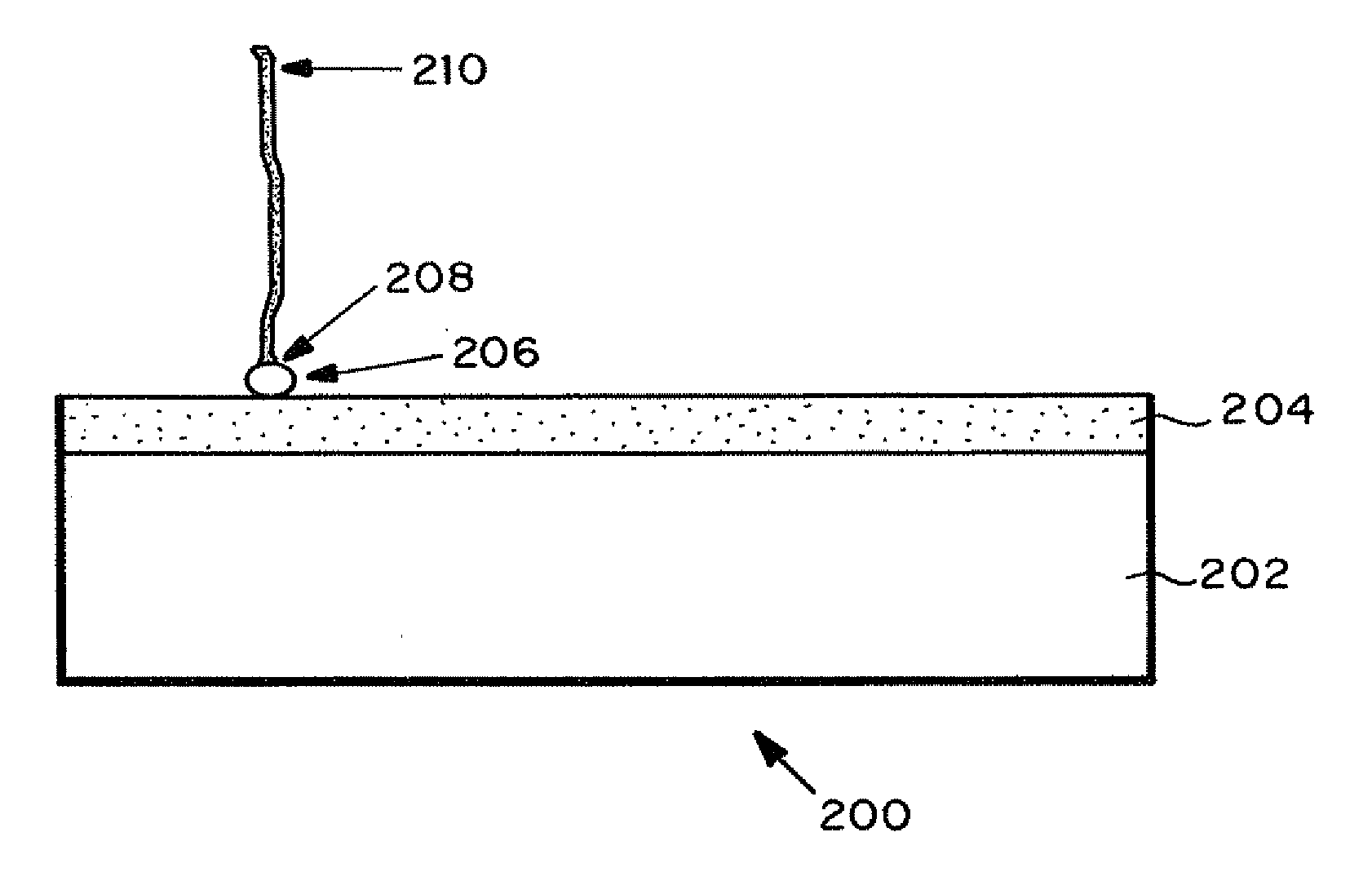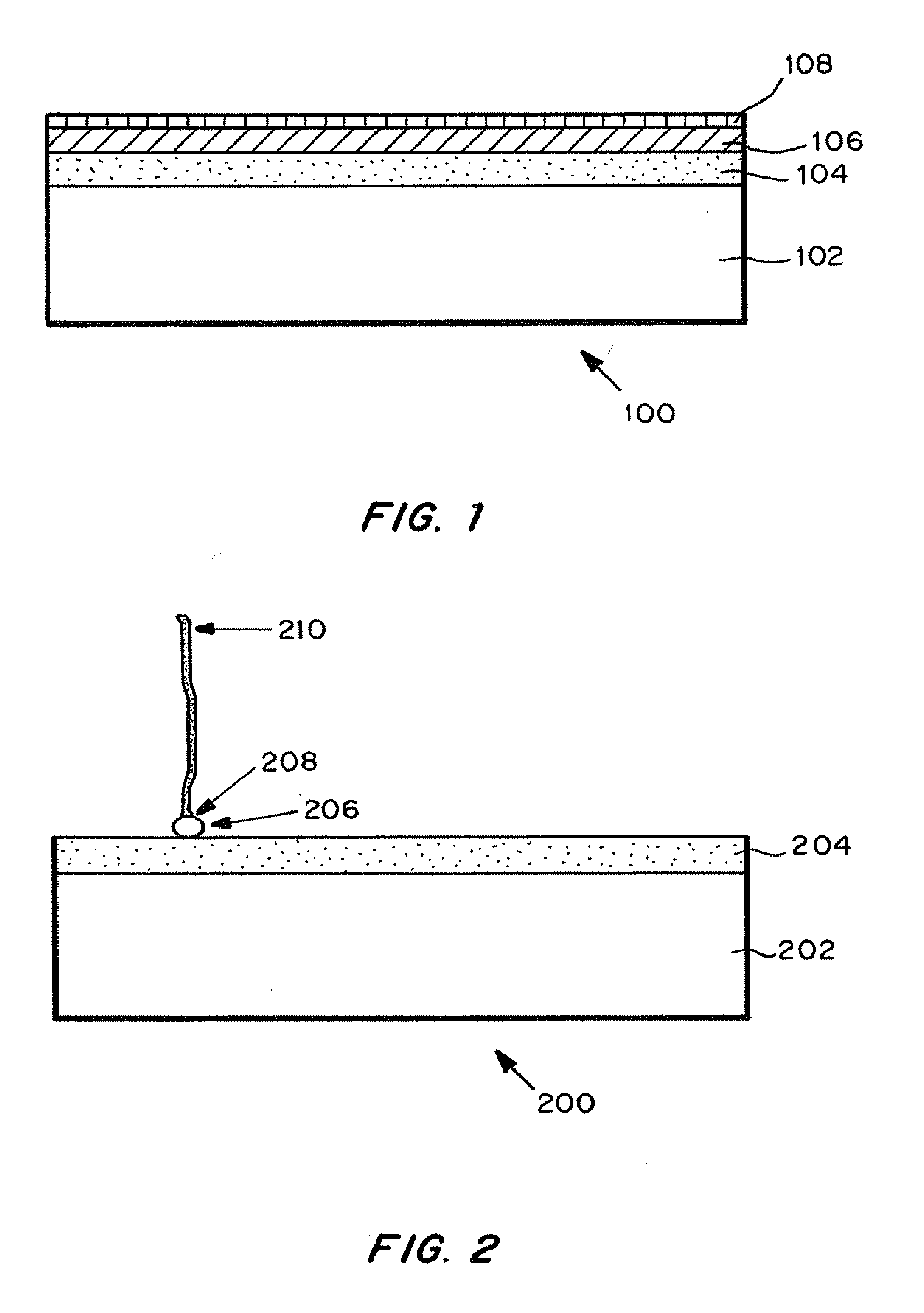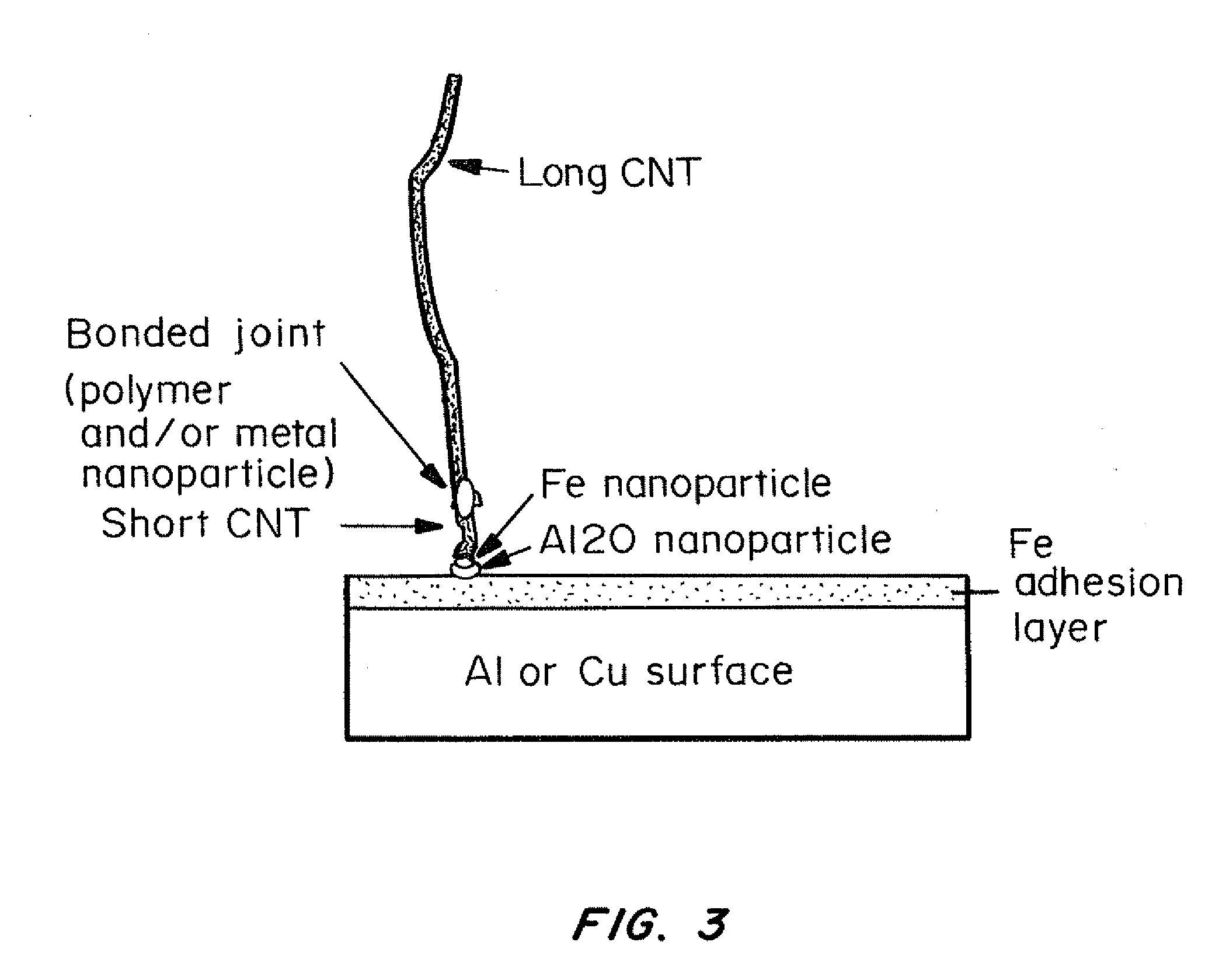Vertically aligned arrays of carbon nanotubes formed on multilayer substrates
a technology of carbon nanotubes and arrays, applied in the direction of record information storage, chemical/physical processes, metal/metal-oxide/metal-hydroxide catalysts, etc., can solve the problems of limited density and yield of cnt arrays grown from these surfaces, and the difficulty of forming dense and well-aligned cnt arrays on metal surfaces, etc., to improve the growth rate, density and yield of nanotubes
- Summary
- Abstract
- Description
- Claims
- Application Information
AI Technical Summary
Benefits of technology
Problems solved by technology
Method used
Image
Examples
example 1
Preparation of Carbon Nanotube (CNT) Arrays
[0101]Aluminum foil was purchased at a thickness of 10 micrometers from Alfa Aesar. A piece of aluminum foil was placed in a square sample holder in a Denton Explorer electron-beam evaporator. The sample holder clamped the aluminum foil around its edges and a 5×5 inch square of the aluminum foil was exposed on the front- and backside of the sample holder, which could be flipped in-situ to deposit metal on both sides of the foil without breaking vacuum.
[0102]One side at a time, an adhesion layer of iron was deposited to a thickness of 30 nm, then an interface layer of aluminum was deposited to a thickness of 10 nm, and finally a catalytic layer of iron was deposited to a thickness of 3 nm.
[0103]The aluminum layer was allowed to cool for 10 minutes before depositing the catalytic iron film. The depositions all occurred at a chamber pressure of approximately 0.0008 mTorr. The iron adhesion layers were deposited at a rate of 0.1 nm / s; the alumi...
PUM
| Property | Measurement | Unit |
|---|---|---|
| thickness | aaaaa | aaaaa |
| thickness | aaaaa | aaaaa |
| thickness | aaaaa | aaaaa |
Abstract
Description
Claims
Application Information
 Login to View More
Login to View More - R&D
- Intellectual Property
- Life Sciences
- Materials
- Tech Scout
- Unparalleled Data Quality
- Higher Quality Content
- 60% Fewer Hallucinations
Browse by: Latest US Patents, China's latest patents, Technical Efficacy Thesaurus, Application Domain, Technology Topic, Popular Technical Reports.
© 2025 PatSnap. All rights reserved.Legal|Privacy policy|Modern Slavery Act Transparency Statement|Sitemap|About US| Contact US: help@patsnap.com



